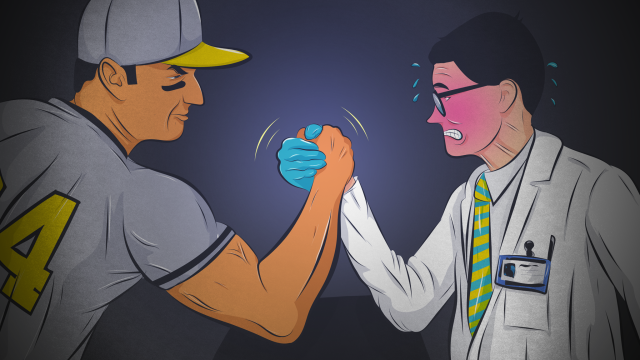Last month, UFC mixed martial artist Jon Jones was busted for using an anti-oestrogen drug known as hydroxy-clomiphene, as well as another drug, called Letrozole. Jones denied taking the drugs, claiming he didn’t even know how to pronounce them.
Illustration by Sam Woolley.
Classified as hormone and metabolic modulators, the drugs that Jones was allegedly taking are typically used to induce ovulation in women and to treat breast cancer. These are the kinds of drugs we expect our doctors and pharmacists to be aware of, not our favourite athletes.

Jon Jones cries as he speaks during a news conference on 7 July 2016. (Credit: Associated Press)
That’s just one of many signs that doping in sports is reaching a whole new level. Athletes are starting to experiment with drugs that traditionally have no business being in sports, and sometimes with drugs that have no business even being in humans; the World Anti Doping Agency’s list of banned substances includes veterinary drugs, and for good reason. Cheaters are not only using unconventional drugs, they’re also experimenting with doses and using masking agents, both of which are meant to throw off the testers.
Granted, doping control laboratories are getting better at catching athletes who use banned substances. But as technology continues to advance, those athletes will discover even more new ways to juice themselves and avoid detection. Eventually, athletes will win the war against performance-enhancing drugs.
They will have even more ways to boost their bodies, from genetic tweaks and novel compounds to cognitive enhancement and advanced prosthetics. At the same time, these future enhancements will be difficult, if not impossible, to detect, forcing WADA to engage in a pointless arms race. So perhaps we need to question why we’re banning these performance-enhancing drugs and prosthetics in the first place, and whether all the effort to prevent their use is worth it.
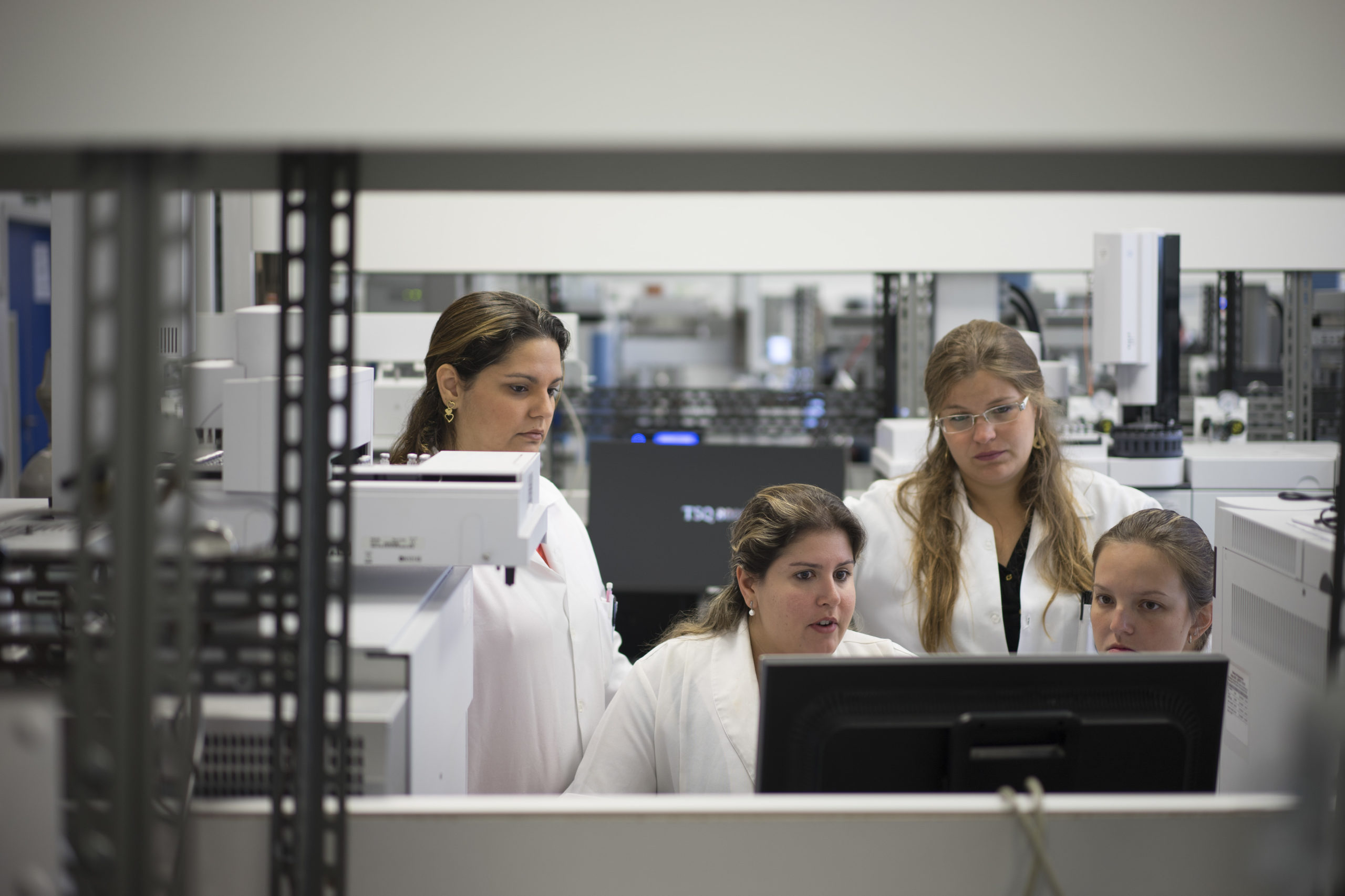
Lab technicians working at the Brazilian Doping Control Laboratory (LBCD). (Image: Associated Press)
Take the upcoming games in Rio, for example. Just 16 days before the start of the 2016 Summer Olympics, WADA reinstated the Brazilian Doping Control Laboratory (BDCL) after a one-month suspension for failing to adhere to international standards. The BDCL is expected to process 6000 blood and urine samples during the Olympics and submit its results within a 24-hour window. Among the 500 substances on WADA’s naughty list are anabolic steroids, stimulants, masking agents and hormones.
Officials are paranoid, particularly after the Russian doping scandal, that cheaters aren’t going to be caught. And they have a right to be concerned: Traces of performance-enhancing substances are expected to be at their lowest concentrations in the history of the Olympic Games.
The BDCL has an assortment of new tools at its disposal to help with this daunting task. For instance, mass spectrometry — a technique that identifies molecules according to their masses and the paths they take through an electric or magnetic field — has improved greatly since the last Summer Games. Such instruments will help researchers determine the mass of a compound, and differentiate compounds of similar mass. So by getting right down to the molecular level, clinicians will be able to take a blood or urine sample and know if it contains a particular chemical ingredient, and how prevalent the ingredient is in the body.
A related technique, called tandem mass spectrometry, takes charged molecule fragments from the initial round of testing and shatters them during a second round. The odds of a molecule splicing in exactly the same way are exceptionally low, making confirmation of a banned substance a snap.
There’s also the orbitrap, a powerful type of mass analyser that can detect even the lowest levels of compounds in complex samples — even compounds that aren’t yet known to clinicians. This analyser works by trapping charged molecules as they orbit around a spindle-like electrode, which produces a unique snapshot of the chemical involved.
Time-of-flight mass spectrometers, which can measure a particle’s unique mass-to-charge ratio, are yet another detection tool that will be used in Rio. Charged molecules, or ions, are accelerated by an electric field of known strength. The resulting velocity allows scientists to measure the physical characteristics of the particles involved, and thus the kind of molecule they’re dealing with. This system was developed back in the 1940s, but recent innovations, such as high-speed electronics, have vastly improved resolution.
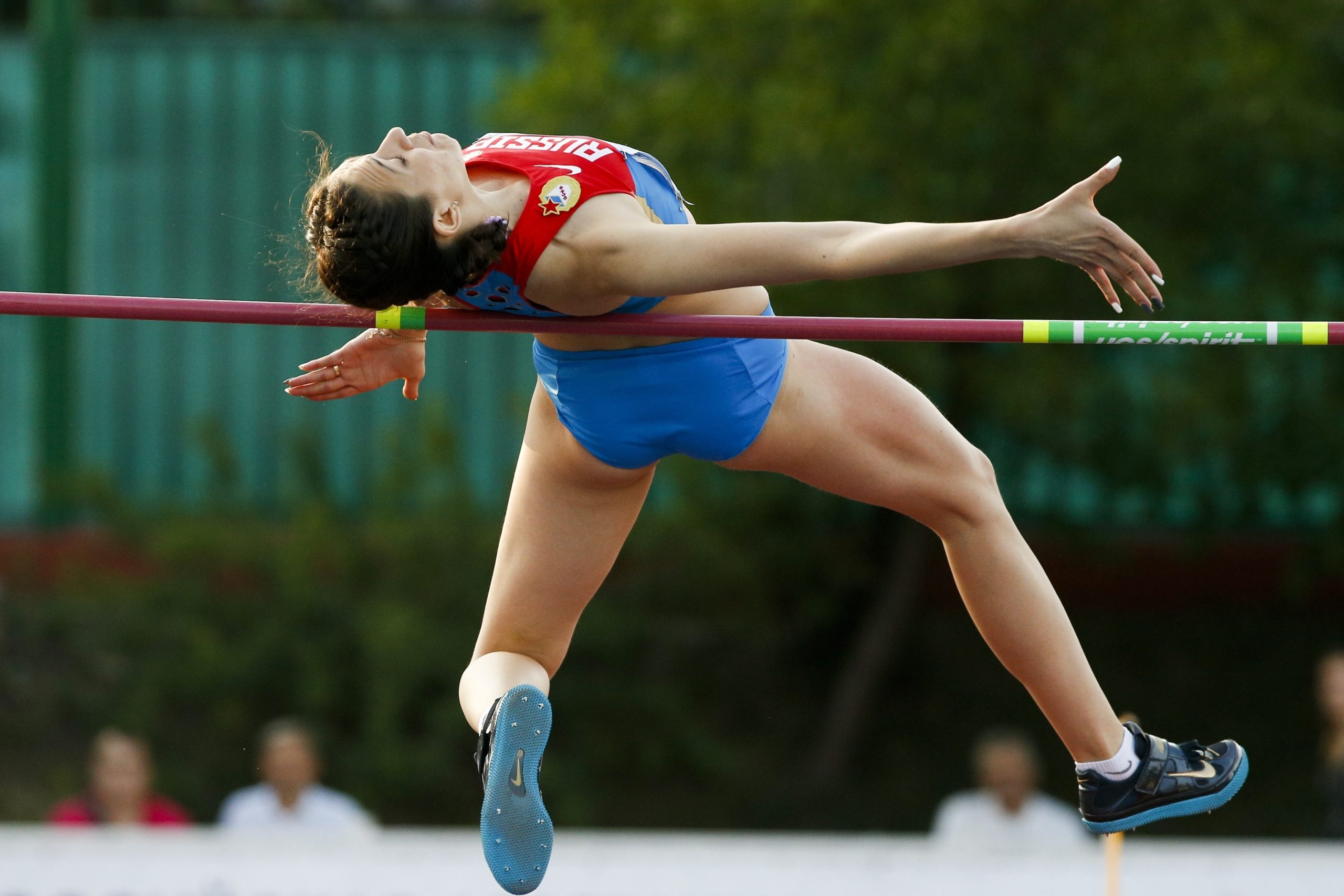
World Championships gold medalist Mariya Kuchina at a recent competition in Moscow. Kuchina is among the more than 100 athletes who have been barred from competing in the Rio Olympic Games by international sports federations. (AP Photo/Alexander Zemlianichenko)
Scientists have also improved their ability to detect how drugs are broken down in the body. So in addition to looking for banned substances, clinicians can look for metabolites produced in the body as such chemicals are processed. The instrumentation has improved so much in recent years that the International Olympic Committee wants to re-test urine samples taken from previous Summer Olympics, including the Beijing games in 2008 and the London games in 2012. The IOC also wants to take another look at samples saved from the 2014 Winter Games in Sochi, Russia.
No one knows the degree to which athletes are cheating, or what measures they’re taking to avoid detection. But as performance enhancement expert Andy Miah from the University of Salford, Manchester, pointed out, “We do know that there is a lot more beyond the banned list that athletes are trying out.”
For example, some athletes are resorting to peptides, a “next generation” class of performance-enhancing substances that are powerful and — because they’re naturally occurring — nearly impossible to detect. Peptides are a short chain of amino acids that serve as the building block of proteins. They’re widely used in vitamins and supplements, and are often used by pregnant women and dieters. But they’re also being used by athletes to boost human growth hormone (HGH), which is partially responsible for muscle growth.
And then there are the drugs we don’t even know about, or are just starting to discover. “We know that in the last few years there have been designer steroids like THG that have only been discovered by chance, so it’s reasonable to assume that there are other things out there like it,” Miah told Gizmodo. “In the meantime, we are told that doping is done by only a minority of athletes — at least until something like the Russia scandal breaks, and then all those claims go out of the window.”
Ultimately, genetics may prove to be the most disruptive to the regulatory regime. Jason Seigler, an exercise physiologist at Western Sydney University, had this to say about the prospect:
Imagine a sporting environment where performance is determined by unnaturally ‘switching on’ the genes that determine your speed, agility and performance, boosting your performance and giving you an edge you wouldn’t otherwise have. I would be surprised if this wasn’t possible within a generation, and it will be incredibly difficult for the anti-doping authorities to distinguish between a ‘natural’ ability and one that has been scientifically manufactured.
There’s no question that genetic enhancements are coming. Scientists have already isolated the MSTN/IVS1+5G>A mutation, which increases muscle mass and strength. It could soon be possible to exploit this gene, and many others, to introduce transgenes. The most likely tool for accomplishing this task is CRISPR/cas9, a powerful new tool that allows scientists to target a gene, snip it out and replace it with a preferred version. This form of gene doping can be done at any point in a person’s life, and the newly acquired traits would not be inherited by offspring.
In the more distant future, some parents may choose to use CRISPR or similar technique to confer advantages like speed, agility and strength at the level of sperm and egg. Should this happen, babies would be born with all the tools needed to compete athletically at a high level.
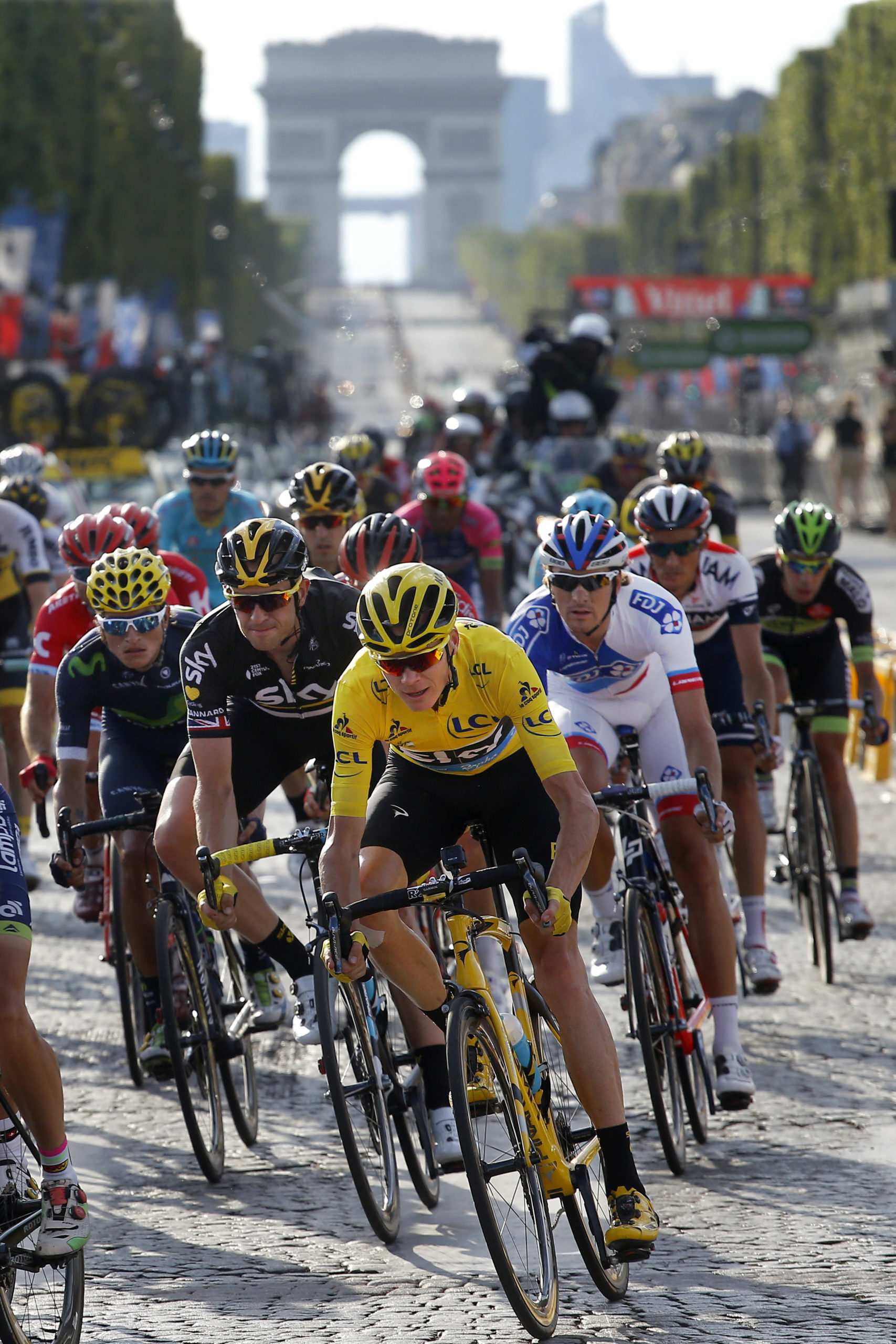
One proposed solution to the genetics problem is the introduction of a Biological Passport, which takes an athlete’s baseline biology and then monitors it over time. Any dramatic changes can be detected and then investigated. But as Miah explained, the problem with detecting a genetic manipulation will depend on when a person’s baseline is first established.
“Even a Biological Passport may not be the best way to do this, especially if manipulation occurs before entering elite level sport,” Miah said. “For over a decade now, the world of sport has been anxious about genetic enhancements, but is not in a position to know whether it is taking place or not. With the rise of gene editing, this could change dramatically and we may see all kinds of new techniques used by athletes and the general population. In such circumstances, it is hard to see how anti-doping will continue to have a public mandate.”
Another burgeoning area of concern is neuro-doping, where drugs like modafinil and adderall are being used to improve concentration, focus and motivation. The memory enhancer Phenylpiracetam is also being considered by some athletes, which could confer a number of cognitive and emotional benefits to competition, including reduced feelings of stress. Even some sports organisations, like the NCAA, have already banned the use of some of these neuro-boosting drugs without a justifiable diagnosis, such as ADHD.
Relatedly, neuroscientist Nick Davis of Bangor University in Wales has speculated that non-invasive techniques to modulate brain activity, such as transcranial magnetic stimulation (TMS), could also be used by athletes. He says that “neurodoping may have different uses in different sports, but that “each sport must determine whether neurodoping should be considered as cheating, or should be considered a legitimate aid to training or performance”.
As this example shows, drugs aren’t necessarily required to boost athletic performance. Consider Stanford University’s cooling glove, or simply “the glove”. This device creates a vacuum that draws blood to the surface of the palms. Cold water is used to cool the blood, which returns to the heart and rapidly lowers the body’s core temperature. By simply extracting heat from one hand, the researchers were able to dramatically improve performance. Tests showed that athletes who used the glove had greater endurance, and showed better strength in various tasks, such as pull-ups and bench presses. The Stanford researchers said it’s “better than steroids”, and proof that enhancements don’t have to require drugs.
And there’s the rise of intelligent prosthetics, which can provide capacities that biology that cannot. “This may include tendons that are stronger or ligaments with greater elasticity,” said Miah. “Or it might also encompass prosthetic limbs that can allow people to run faster than their biological counterparts. We saw this in London for the Olympics, where runners were becoming competitive at an Olympic level, not just winning the Paralympic Games.”
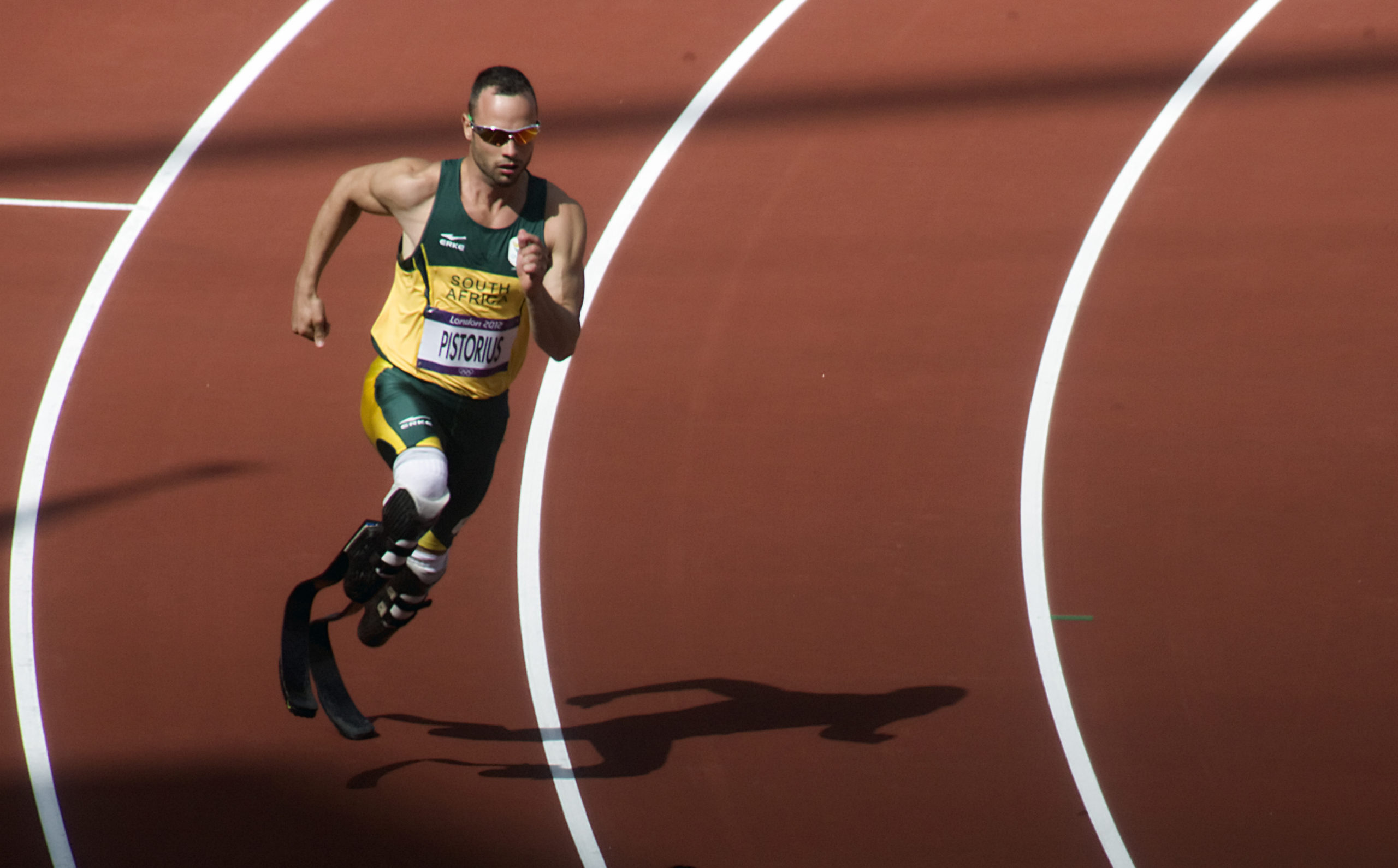
Oscar Pistorius became the first double-amputee to compete against able-bodied athletes at the Olympics. (image: Jim Thurston/Flickr)
Finally, there’s the “elephant in the room” in the doping debate, and is has to do with the expansion of human enhancement in society. “In a world where we are more comfortable modifying ourselves, who will care about athletes taking a nasal decongestant? I think very few people will, so the project of anti-doping feels like it’s on its last legs,” said Miah.
There are alternatives to the current approach. One is to create divisions similar to combat sports. But instead of designating heavy-weights and light-weights, individual sports could create divisions based on the types of enhancements allowed. There could even be an “anything goes” division, although this won’t completely prevent cheating, as inevitably some juiced-up athletes will try to compete in divisions not meant for them.
Miah suggests a complete revision of the current rules to allow athletes more freedom to use a range of performance enhancing technologies, while ensuring that health risks are monitored. Testing would still be required, but it would be done with a completely new set of constraints and circumstances.
“Athletes would have greater clarity on the risks, greater confidence in the substances, more alternatives than just synthetic substances, and a completely different sociology around the problem,” said Miah. “In this version, athletes would be more empowered to know the implications of what they are doing and sports organisations would be responsible for investing into safer forms of enhancement.”
[Sources: Western Sydney University, CORDIS, Spectrum IEEE, HubPages]
